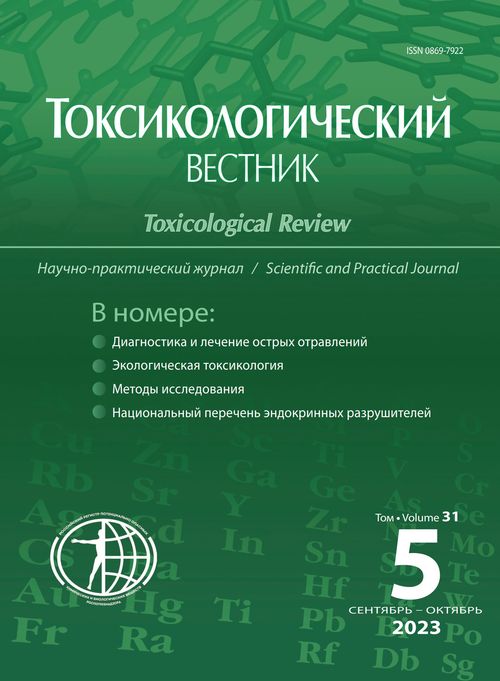Introduction. The current methods for determining the residual amounts of organochlorine pesticides – 4,4-dichlorodiphenyltrichloromethylmethane (DDT) and its metabolites, hexachlorocyclohexane (HCH) (α, β, γ isomers) in food products and food raw materials, subject to mandatory declaration for their content, despite a fairly high sensitivity, are characterized by low measurement selectivity and are based on the use of obsolete equipment, time-consuming sample preparation.
Material and methods. In the work, the method of gas chromatography with mass spectrometric detection on a gas chromatograph “Khromatek-Kristall 5000.2” was used. Sample preparation was carried out by the method of matrix solid-phase dispersion, based on the destruction and dispersion of the analysed sample together with florisil in order to obtain a free-flowing dry mixture.
Results. The effectiveness of the method has been proven by validation on 16 model samples of food products of animal origin of various compositions. The versatility of the analysis procedure is ensured by the systematization of food products according to their structural and mechanical properties into groups: liquid, having a finely dispersed structure and a high water content (group A); viscous and pasty products having a fine structure (group B); products of animal origin requiring grinding and dispersion (semi-solid and solid), having a high water and/or fat content, not free-flowing (Group B); dry products of animal origin (dried or freeze-dried), and/or free-flowing powdered products with a low water content that require wetting, grinding and dispersion (Group D). Ingredient composition (water, fat, protein, hydrocarbons) does not significantly affect the stability and reproducibility of the developed method.
Limitations. The method has been tested and validated on samples of food products of animal origin.
Conclusion. The developed method for the determination of DDT and its metabolites, HCH (isomers α, β, γ), providing a range of measured concentrations (0.01–1.0 mg/kg) will make it possible to control the content of substances in all groups of food products of animal origin identified in the TR CU 021/11 “On food safety”, including products for baby food.
Compliance with ethical standards. The study does not require the submission of a Biomedical Ethics Committee conclusion or other documents.
Contribution:
Fedorova N.E. — concept and design of the study, writing the text;
Dobreva N.I. — concept and design of the study, collection and processing of material, collection of literature data, writing the text;
Bondareva L.G. — concept and design of the study, collection of literature data, editing;
Suslova A.V. — collection and processing of material, statistical processing of the material.
All co-authors — approval of the final version of the article, responsibility for the integrity of all parts of the article.
Funding. The study doesn’t have any sponsorship.
Conflict of interests. Authors declare no conflict of interests.
Received: September 5, 2023 / Accepted: October 19, 2023 / Published: October 30, 2023







